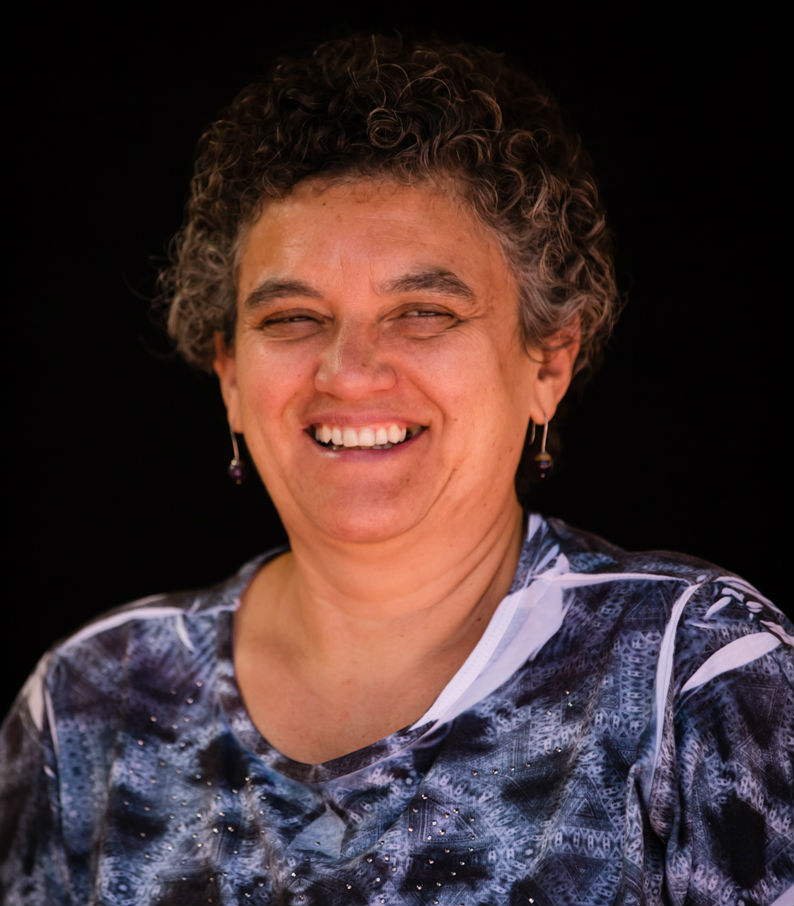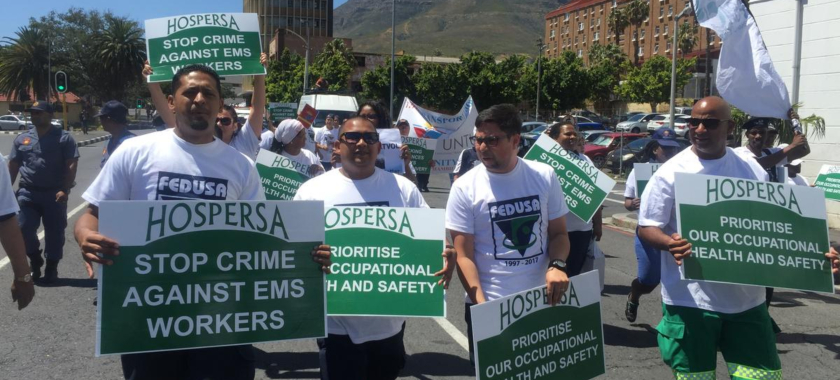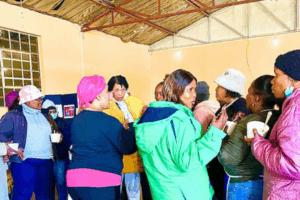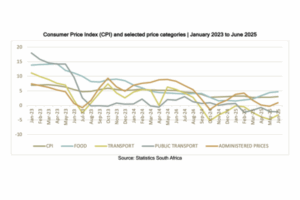Health care workers spoke about verbal, physical, psychological and sexual abuse experienced by themselves and patients. The quote below, which is extracted from the resource we produced at the end of the project, captures the state of the Meadowlands Clinic before we began the pilot project.
"These people from the Meadowlands community used to terrorise us. From the time that they come into the gate, they start singing songs because they said our services are so poor and that we don't care for them...They said they'd burn this clinic down with us inside. This came from our mothers and fathers, not from our peers...We did not take this lying down because if they say you are going to be burnt in the clinic and they have done it somewhere, not at Meadowlands community but somewhere else, it is serious."
Baby Moipane, Nurse clinician and a HOSPERSA shop steward at Meadowlands Clinic.
We hadn’t visited the Meadowlands Clinic for a year because the project period lapsed. Even so, the work continued, led by the core group comprising the unions, the clinic health committee, churches and NGOs in the community. The group invited us to a meeting at the clinic in October and I could feel the difference in the space. There seems to be more care about how the physical space looks. The security people are less aggressive and there’s no sewage spilling. A group member said the clinic was calmer and more peaceful. Some norm change had clearly happened, and the challenge now is sustaining the positive changes. That the core group continued to work together after the project ended is a big indicator for us. I felt proud that the changes happened in the midst of the deterioration in the health sector.
Violence in healthcare settings is increasing
At the clinic level, the Clinic Health Committee, which represents the community, is trying to constructively engage with the management of the clinic when issues arise at the clinic. Previously, aggrieved community members would turn violent, threaten nurses and want to burn the clinic. The church has started running gender-based violence programmes inside the clinic and at the churches. Inside the clinic, HOSPERSA has tried to get the staff to hold a respectful relationship – to remind its members that the people they serve are our community members. Staff are communicating more, for instance, about medicine and staff shortages, to deter the public from erupting. Staff members recognise that wearing name badges establishes a rapport when a visitor in the clinic is able to address them by their names. Clinic management is taking suggestions and trying to improve the service. And HOSPERSA is using the resource that we produced at the end of the pilot to continue the dialogue, share their success and replicate the intervention in other health facilities.
As the facilitators, we made the time to create a space where a diverse group of people planned activities together and valued every person’s contribution. We brought young people who spoke about their unpleasant experiences in healthcare settings. Young people said they felt undermined and mistreated by nurses. The staff spoke about how as mothers it was difficult to shift roles and provide the professional care pregnant teenage girls required. For the first time, the staff listened to young people without being judgemental. The space that we helped to create provided a positive experience for project participants who were then able to counter all the negative experiences.
Workplace violence is gendered
The Meadowlands Clinic Project seemed like a simple thing when we started out. We sought to bring people together in a safe space where they felt respected and valued to experiment with different approaches to addressing violence. I feel proud of the positive impact of the project – that the results we saw can be possible in a very challenging environment.







